How to remove gouache from clothes?
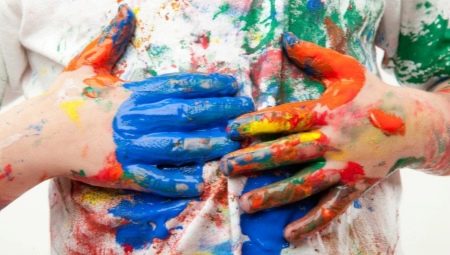
If there is a small child in the house, then during the creative process, clutter is ensured. Plasticine, crayons and paints leave traces everywhere. Removing gouache paints from clothing is tricky, but possible.

What is gouache?
Gouache is a water-based paint. The color of a gouache is determined by the type of coloring pigment, which is ground into powder during the production process. White gives it a thick matte texture.
In modern production, to improve the properties of the material, substances such as fruit gum, dextrin and glycerin. They act as plasticizers. Used as a binder base phenols or gum arabic. In children's gouache, instead of gum arabic, it contains glue.
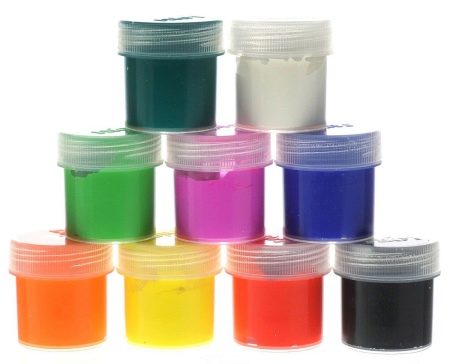
There are three types of gouache, depending on the purpose:
- artistic gouache. It is used only on special painting canvases. The ability to quickly absorb into the surface allows you to apply the paint in several layers for saturation. It contains whitewash, gum arabic and distilled water;
- poster gouache contains PVA glue and kaolin. Thanks to these substances, the coating becomes denser and the color more saturated. It dries quickly. This paint is used to make various posters and decorations. Children's gouache is the closest in composition to poster gouache;
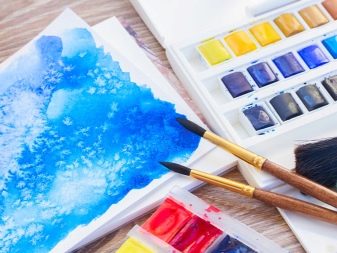

- fluorescent paint is capable of glowing under ultraviolet rays;
- acrylic gouache. Modern developments have made it possible to add acrylic to gouache. It makes it possible to cover any substrates with it and does not wash off after the paint has dried.
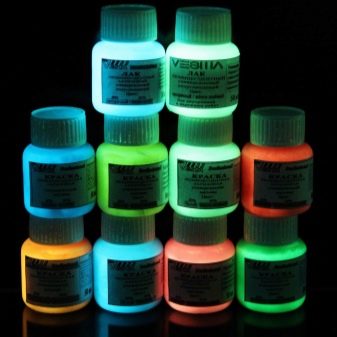
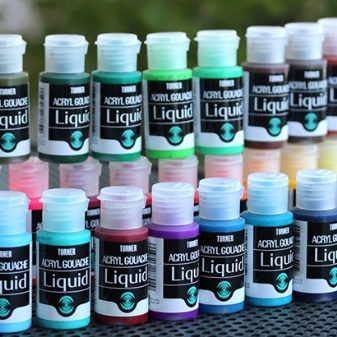
How to remove stains?
If a gouache stain appears, you should first of all think about how to get it out of your clothes most effectively at home. There are a huge number of specialized stain removers on the market. You should definitely take advantage of them. However, long before that, various folk remedies for removing paint stains were invented.
Widely known among budget products "Antipyatin"... According to reviews, it copes well with many types of contamination. Of the more expensive products for removing stains, use "Vanish", "Stork", stain removers from Amway and Faberlik.
All products must be used according to the recommendations on the packaging and see what types of fabrics they are suitable for.
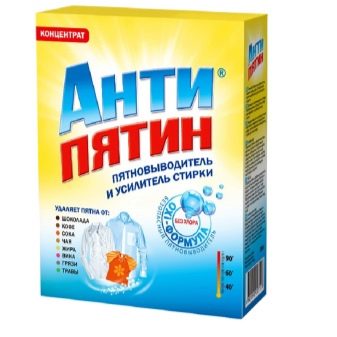
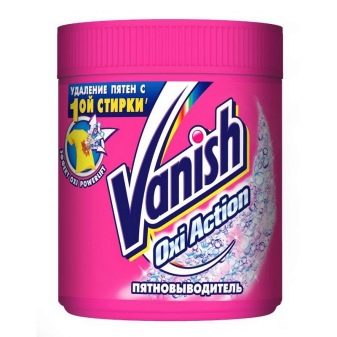

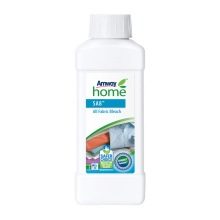
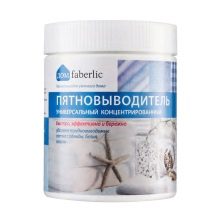
If a store product did not help, or it simply was not at hand, you can use folk recipes for removing stains.
Not all are equally well suited for all types of fabrics.
It is much easier to remove stains from synthetic materials than to wash clothes made from natural fabrics.
The most famous and time-tested tools include the following:
- Take the stained cloth and moisten it abundantly with water. Rub the stained area with regular laundry soap and leave for about half an hour to soak the stain thoroughly. Then try rubbing off the dirt and rinse in clean water. Repeat the procedure again if necessary. The soap is suitable for all types of fabrics and for processing baby clothes.
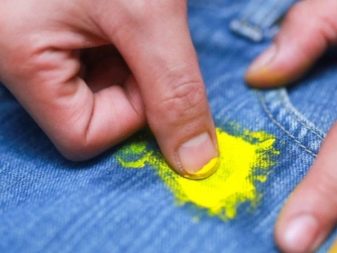
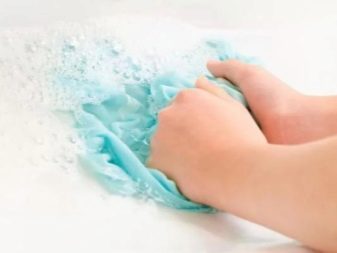
- As a last resort, you can try treating the stain with a gel-like dishwashing detergent. It is applied to the contaminated area, having previously foamed, and left on the fabric so that it is well saturated.
- Mustard powder also has cleansing properties. It is necessary to dilute it with water to a mushy consistency, then apply the resulting paste to the contaminated surface. Leave the product on for 15-20 minutes and rinse off.
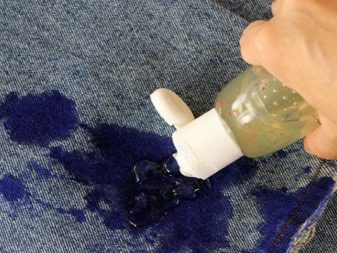
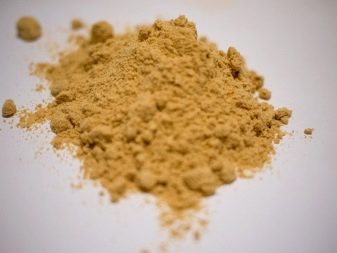
The easiest way is to remove gouache from synthetic fabric.
If the above methods don't work, try using ammonia. The most powerful formula is a mixture of ammonia and oxalic acid.
The products must be combined in equal parts and applied to the stain. The solution must be given time to properly saturate the fabric, and then wash the clothes in the washing machine.

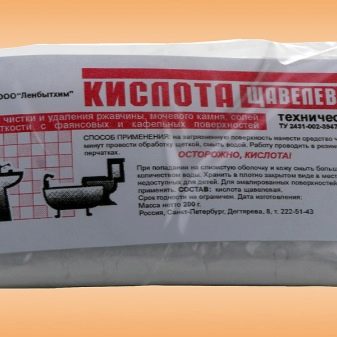
You can try nail polish remover. Apply it to a cotton pad or cloth and rub into the surface, then be sure to wash the item with powder in the machine.
Natural fabrics are likely to give you a lot of hassle. In this case, household chemicals that are available in many homes will come to the rescue. Try using refined gasoline to remove the stain. Use a cotton swab dipped in the solution to treat the stain and leave a little for the gasoline to react with the paint. After that, you need to wash the product in a typewriter to eliminate the odor. Suitable for these purposes and "White Spirit". It has a less pronounced odor than gasoline. The processing scheme is the same.
Vinegar does a great job of painting paint stains on synthetic clothing. It is necessary to apply it with a swab on the dirt, leave it for a while, and rinse the product in water to get rid of the smell.
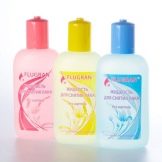
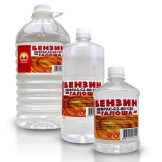

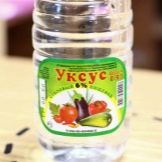
Gasoline works well, but it can leave unpleasant consequences on fabrics - oil stains. Alcohol will help to cope with them. You need to soak a cloth with it and wipe off the stains, then rinse the thing again.
Particularly delicate fabrics require careful handling. There is a recipe for just such materials - a mixture of glycerin, ammonia and denatured alcohols taken in equal proportions. The solution should be carefully poured directly onto the stain, allowed to soak for 20 minutes, and then rinsed well several times.
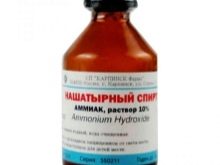
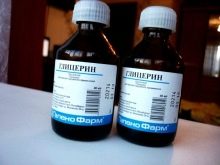

White clothes
White fabrics have their own processing specifics.First of all, you can use a bleach to remove the gouache stain. Better to choose a remedy which contains no chlorine.
If you need to remove dirt from a synthetic blouse, chlorine can damage the fabric. An excellent handy tool for influencing white things, which is in the arsenal of any housewife, is baking soda. It is poured directly onto the dirt, after wetting the cloth with water. You can try scrubbing the stain with a rag or soft brush.
After that, you need to wash the product in a machine with ordinary powder and rinse thoroughly.
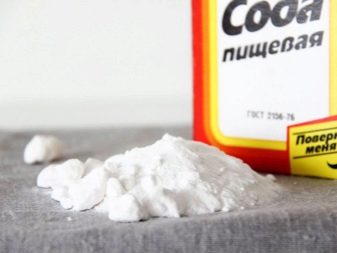

Toothpaste can help to quickly remove gouache from a white shirt. Thanks to modern active ingredients, it has whitening properties. 5 minutes after application, the paste is washed off with water.
If there are stains, the thing can be washed in the machine completely. A slightly extreme, but effective method is to place a white product in oxalic acid dissolved in water. It costs no more than an hour to soak it, and then rinse thoroughly with clean water.
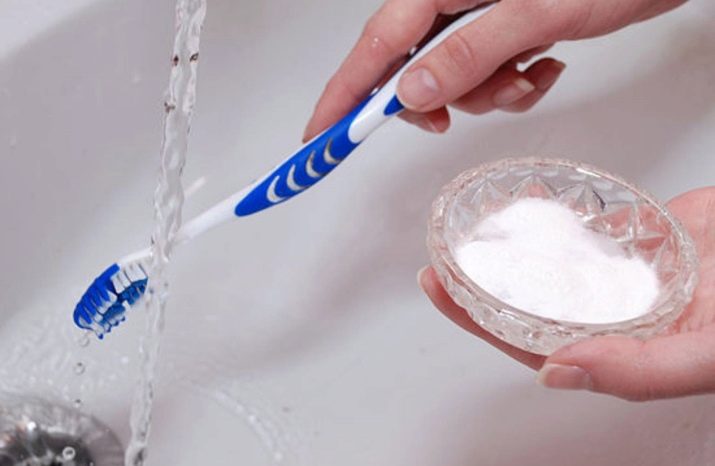
Colored fabric
Do not use bleach when cleaning colored fabrics, so your stain remover should be designed for colored materials. It is better not to use solvents and "White Spirit", they can change the color of the treated area, and as a result, the item will be damaged. This is especially true for multi-colored synthetic products.
Set aside baking soda and toothpaste, but soap, dishwashing detergent, and vinegar will help clean up the dirt.
If your baby or you in the creative process left a whole palette of stains on jeans, you will have to work hard to remove them. Colored denim has a high density, which means that gouache eats deep into its texture, and the pollution must be influenced by strong means.
For optimal results, you can try mixing equal parts gasoline and vinegar, apply this solution to the problem area, leave for about half an hour, then rinse your clothes thoroughly under running water.
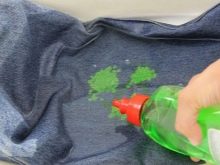


Old stains
It is good if the contamination on the clothes was noticed immediately, but most often it is detected some time after its occurrence. Old traces of gouache are the most difficult to remove. It hardens and, due to its adhesive properties, penetrates deeply into the fibers of the fabric.
There are some tips for successfully removing old stains:
- To remove old dirt, it is better to pre-soak clothes in water for a couple of hours. You can additionally treat it with laundry soap or add washing powder.
- If the gouache is dense and has been applied for a long time, you can treat the stain with ordinary or ammonia before soaking, then soak it, as in the previous case. After all this, you can use all of the above means, depending on the type and color of the fabric.
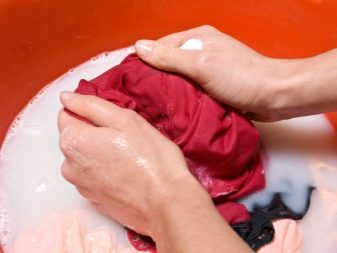
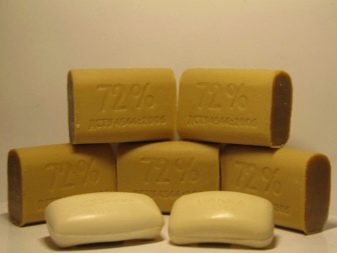
- If a thick layer of gouache gets on the surface of the clothes, then the dried paint must be carefully scraped off with a knife, then rubbed over the affected area with laundry soap and left in soapy water for a couple of hours. All other cleaning agents must be applied with a brush.
- Fluorescent paints should be cleaned with eucalyptus oil. They gently smear the stain, wipe it off with a clean cloth. But this technique is not suitable for delicate materials such as velvet, silk, chiffon. You can find a recommendation to use eucalyptus or butter for pretreatment and softening of gouache pollution, but after these actions an oil trace will remain on the product. You can get rid of it with rubbing alcohol or nail polish remover.
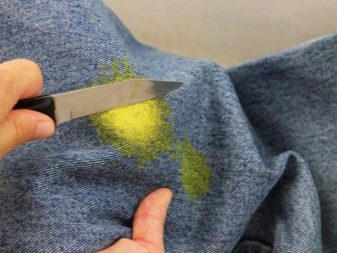
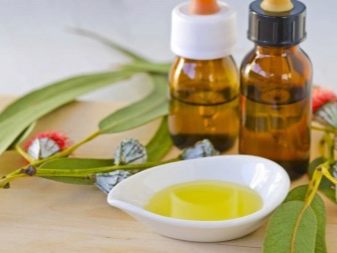
General Tips
There are guidelines that apply to any method of removing gouache stains:
- If you notice a stain, you need to remove it as soon as possible, otherwise the dirt will stick into the fabric, making the task more difficult.
- Try to determine the type of paint as accurately as possible, then it will be easier to apply the most effective methods of dealing with the stain.
- If the gouache is thick on your clothing, you need to carefully remove it with a brush, knife or razor, but only if the stain is completely dry (otherwise, you can rub the paint even deeper into the fabric).
- Always read labels on clothing carefully. They indicate the composition of the material, what cleaning methods can be applied to it. Washing may be prohibited at all.
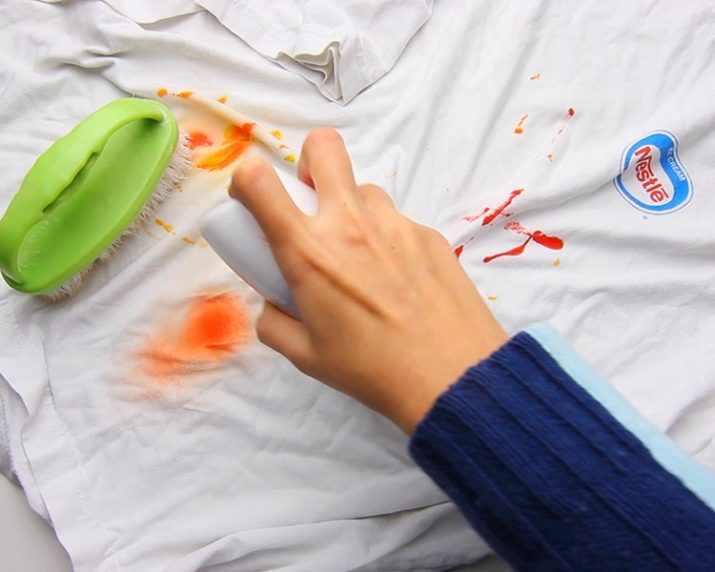
- If commercial stain removers are used, match the color and type of fabric.
- Wear hand gloves when handling household chemicals.
- Strong compounds such as alcohol, thinner, or white spirit can damage the fabric, so it is best to test them first on an inconspicuous area of clothing.
- It is necessary to soak products stained with gouache in cold water, otherwise the binders will begin to harden when heated, making the stain practically impossible to remove. This rule must be observed when washing in a typewriter.
For more tips on how to remove paint from clothes, see the next video.








